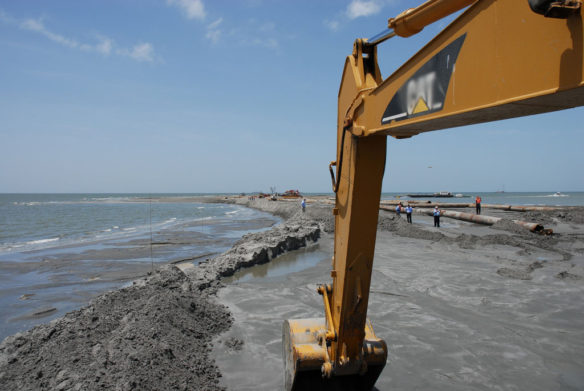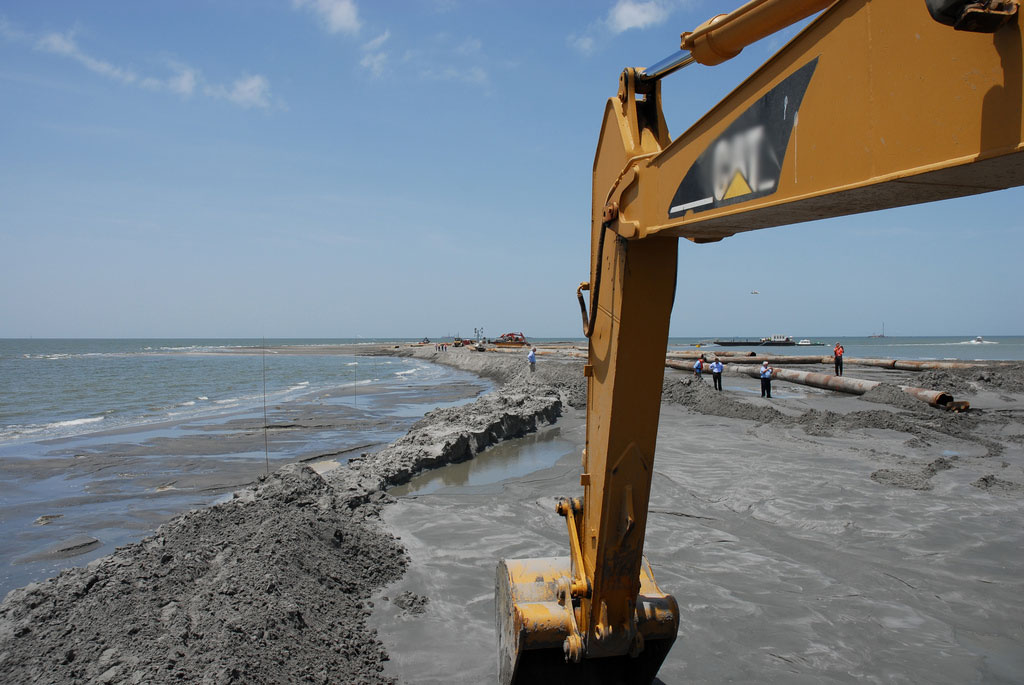
Dredging and sand berm construction in coastal Louisiana. Photo source: ©© Louisiana GOHSEP
Excerpts;
With thousands of square miles of land already lost along the coast, Avery Island, home of the famed hot sauce, faces being marooned…
Read Full Article; Guardian UK (03-27-2018)
Coastal erosion poses multibillion-dollar risk to Baton Rouge economy, LSU study says; Business Report (03-22-2017)
While Baton Rouge is not on the “front lines” of Louisiana’s coastal land loss crisis, billions of dollars worth of economic activity are at risk for the city as the Gulf of Mexico continues to swallow wetlands, which are key storm buffers along the coast, according to a new LSU study…
Rising water is swallowing up the Louisiana coastline: the $50 billion battle plan; CBS News (01-18-2017)
The geography of the Louisiana coastline is quickly changing. A state-commissioned report predicts rising water could swallow more land along the Gulf of Mexico, if nothing is done to address damage caused by climate change and commercial activity. A new master plan of 2017 calls for an investment of more than $50 billion over 50 years…
Climate change will redraw Louisiana’s flood risk maps, Newsweek (08-18-2016)
Resettling the First American Climate Refugees – Louisiana; The New York Times (05-03-2016)
The First Official Climate Refugees in the U.S. Race Against Time; National Geographic (05-27-2016)
Gulf Eats Away at Coast Outside Levee-Protected New Orleans, AP (09-14-2015)
In the past century, more than 1,880 square miles of Louisiana land has turned into open water — an area nearly the size of Delaware. And the loss continues unabated, with an estimated 17 square miles disappearing on average each year…
Piling sand to stop erosion ultimately made the land sink, study says; NOLA (12-26-2015)
Coastal erosion needs our attention, South Coast Today (01-04-2016)
NOAA study finds ‘living shorelines’ can lessen climate change’s effects, NOAA (12-22-2015)
Rethinking Living Shorelines, By Orrin H. Pilkey, Rob Young, Norma Longo, and Andy Coburn;Program for the Study of Developed Shorelines / Western Carolina University, March 1, 2012, Nicholas School of the Environment, Duke University
In response to the detrimental environmental impacts caused by traditional erosion control structures, environmental groups, state and federal resource management agencies, now advocate an approach known as “Living Shorelines”that embraces the use of natural habitat elements such as indigenous vegetation, to stabilize and protect eroding shorelines.









